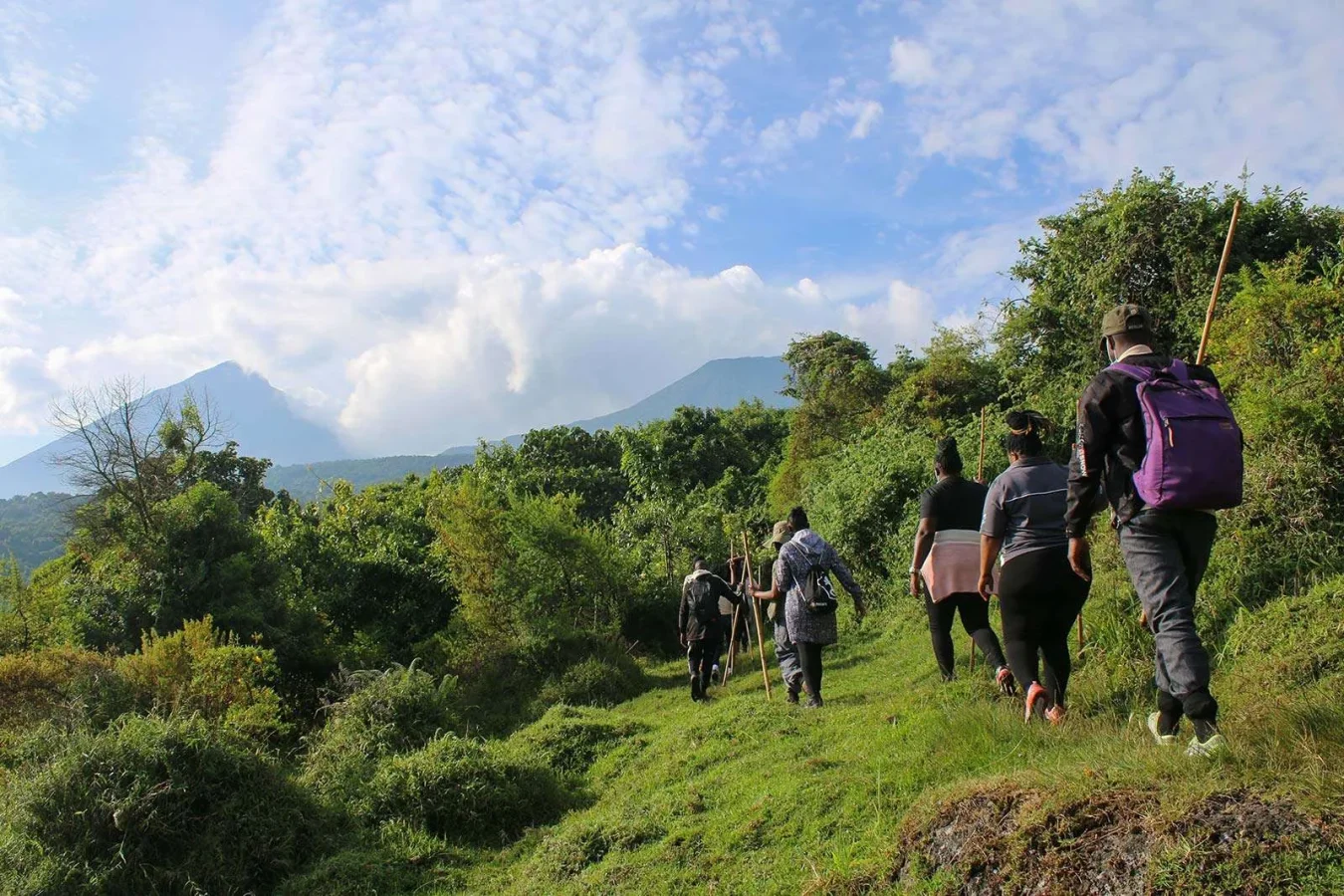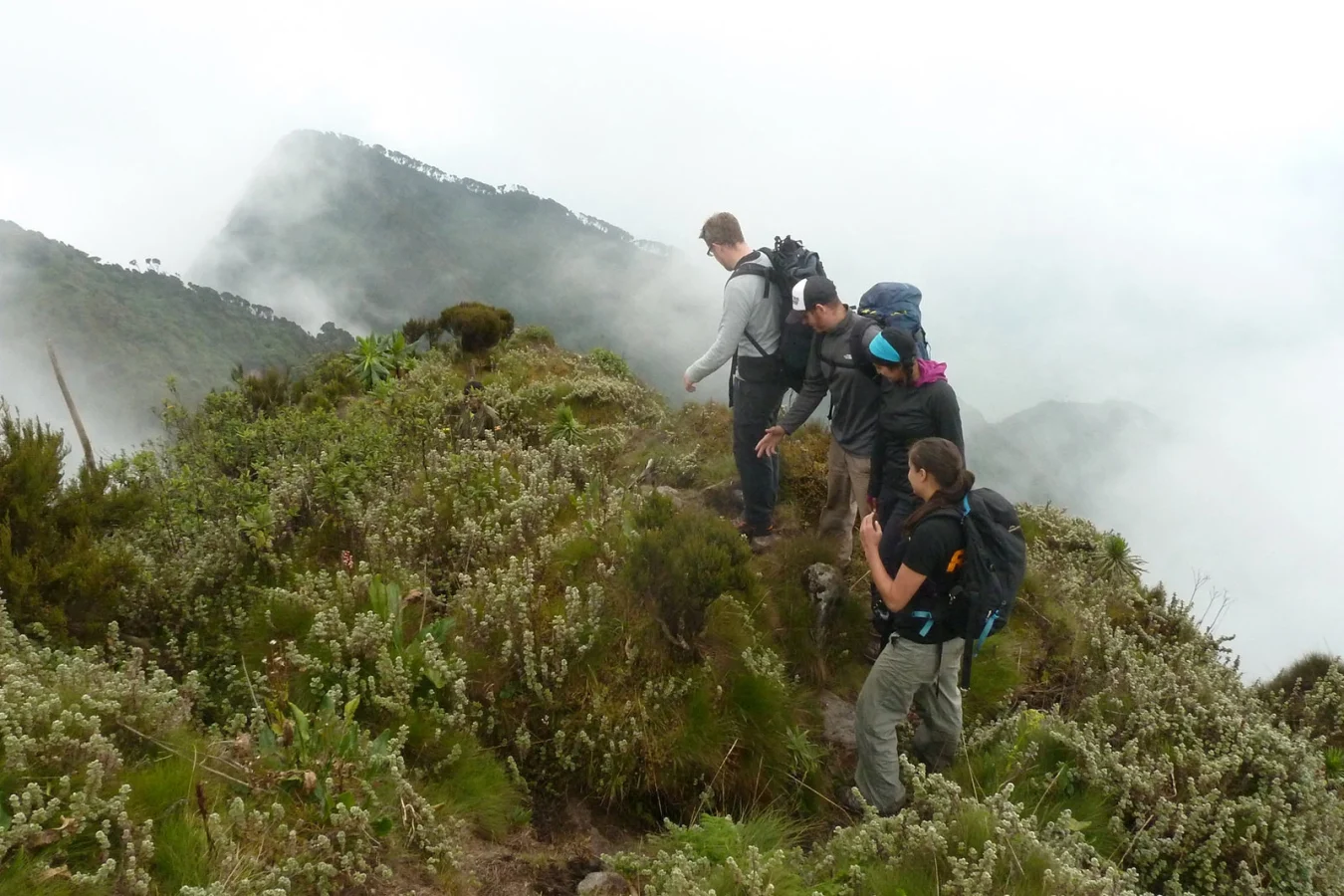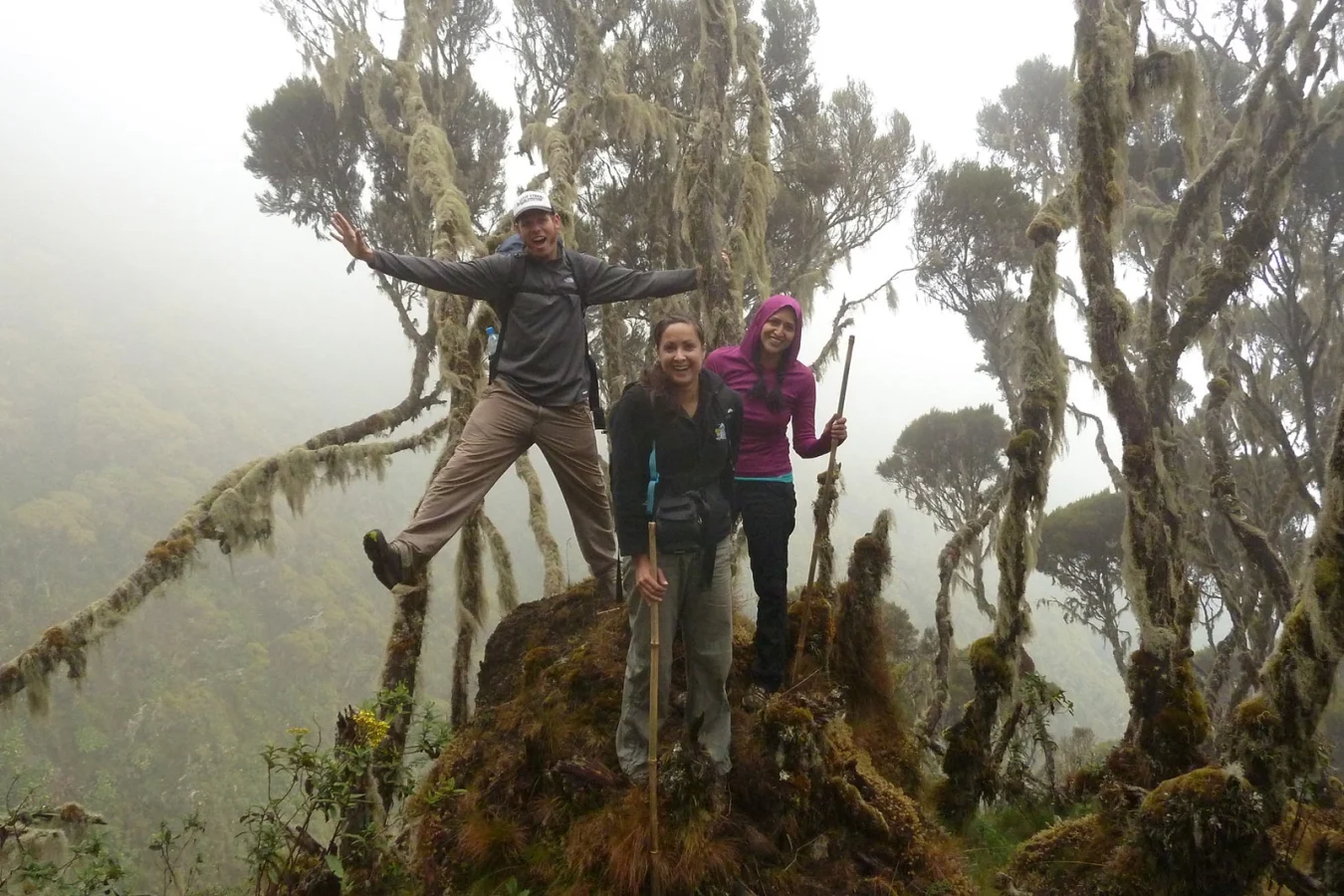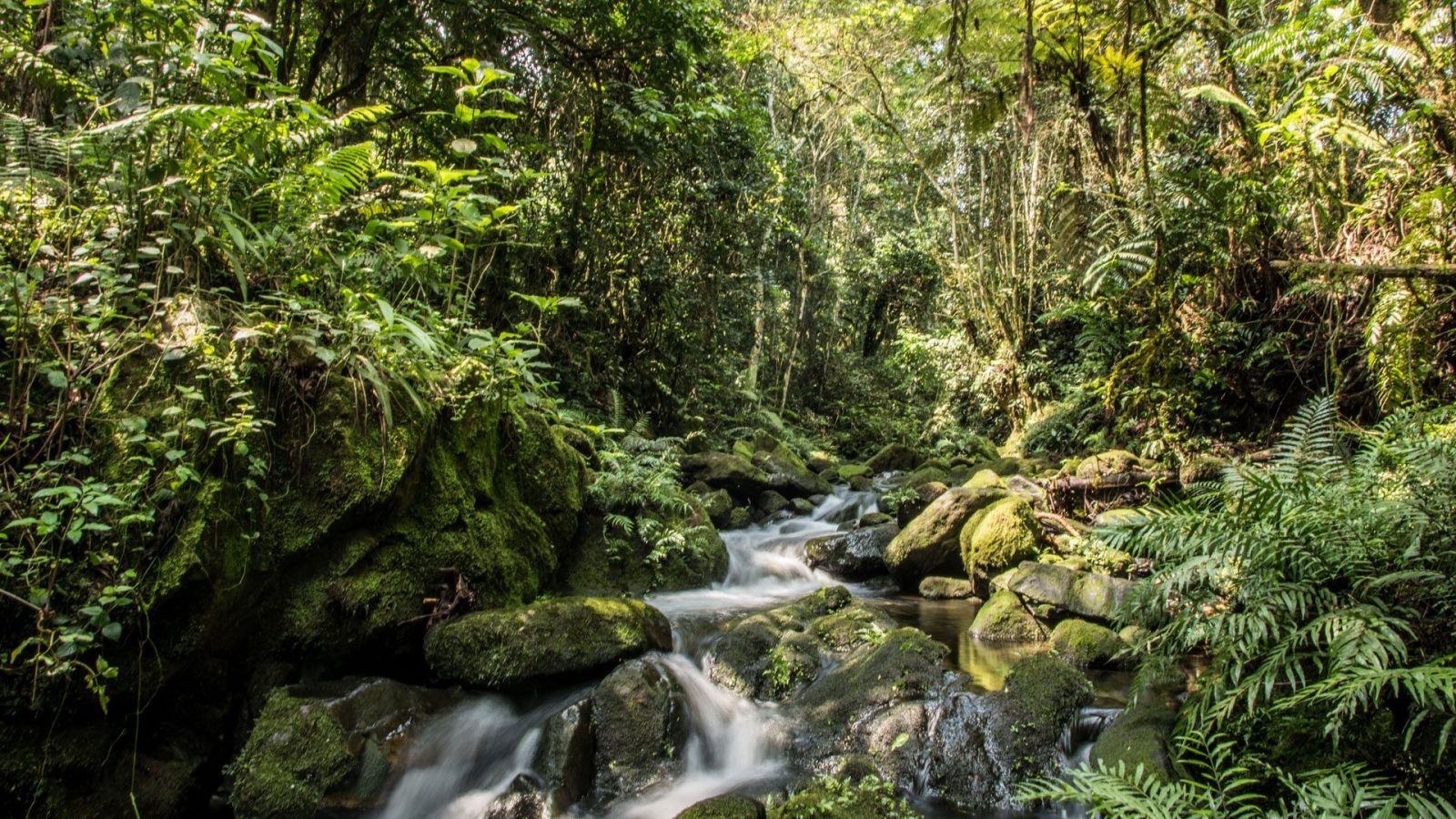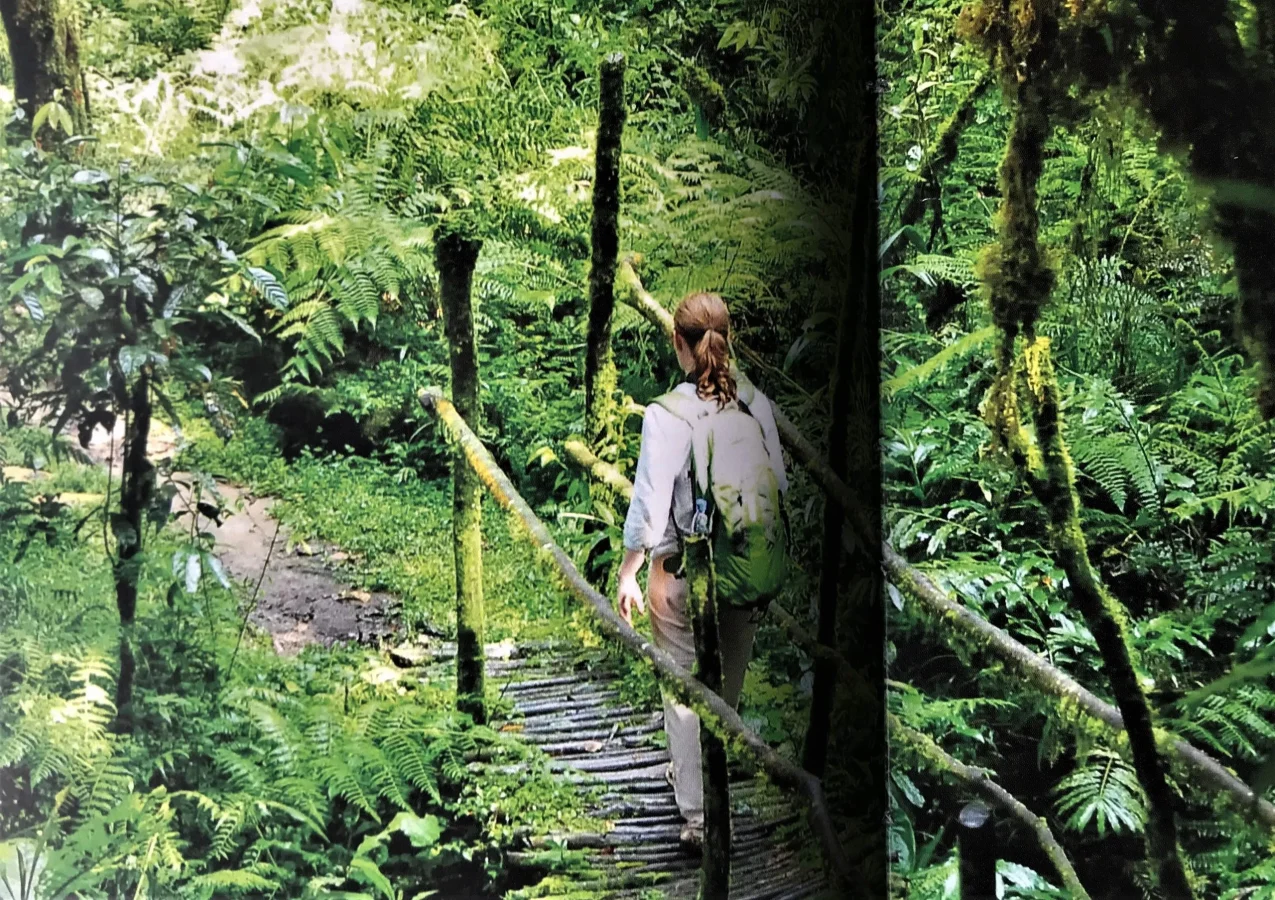Mount Gahinga 3,473 m (11,394 ft): Exceptional Guide for Hiking Mount Gahinga Volcano Uganda – Mgahinga Gorilla National Park
Mount Gahinga, standing at an impressive elevation of 3,473 meters (11,394 feet), is a dormant volcano situated in the Virunga Mountains of East Africa. These mountains straddle the borders of Uganda, Rwanda, and the Democratic Republic of Congo, renowned for their stunning landscapes and rich biodiversity. Mount Gahinga is part of the Mgahinga Gorilla National Park in southwestern Uganda, forming a crucial habitat for the endangered mountain gorillas.
Geologically, Mount Gahinga is composed primarily of volcanic rocks, characteristic of the Virunga region. Its formation dates back to the volcanic activity that shaped the area millions of years ago, leaving behind a series of peaks that now attract both adventurers and scientists alike. The volcano is one of the smaller peaks in the Virunga range but holds significant cultural and ecological importance.
The name “Gahinga” itself derives from the Kinyarwanda word “kinyaga” meaning “pile of stones,” a fitting description of the rocky terrain that characterizes its slopes. The mountain is known for its lush vegetation, including bamboo forests and dense undergrowth, providing sanctuary not only for gorillas but also for a variety of other wildlife species, such as golden monkeys and various bird species.
For trekkers and climbers, Mount Gahinga offers a moderate challenge compared to its neighboring peaks. The ascent typically involves traversing through varying altitudes and terrains, offering breathtaking views of the Virunga region and its surrounding landscapes. Visitors often engage in guided hikes led by local experts who provide insights into the mountain’s natural history, wildlife conservation efforts, and the cultural significance of the region’s indigenous communities.
In summary, Mount Gahinga stands as a testament to the geological forces that shaped East Africa’s landscape, while also serving as a vital sanctuary for endangered species and a destination for eco-tourism and adventure seekers alike. Its combination of natural beauty, biodiversity, and cultural heritage makes it a compelling destination within Uganda’s Virunga Mountains.
What is the Size of Mount Gahinga?
Mount Gahinga, located in the Virunga Mountains of southwestern Uganda, stands at an elevation of 3,473 meters (11,394 feet) above sea level. It is part of the larger Virunga volcanic range, characterized by its cone-shaped peak and rugged terrain. Geologically, Mount Gahinga is primarily composed of volcanic rocks and exhibits a diverse range of ecosystems, including bamboo forests and dense vegetation.
Despite being one of the smaller peaks in the Virunga Mountains, Mount Gahinga holds significant ecological importance as a habitat for endangered mountain gorillas, golden monkeys, and numerous bird species. Its size and distinctive landscape make it a popular destination for trekkers and eco-tourists seeking to explore the unique biodiversity and cultural heritage of the region.
Where is Mount Gahinga Located?
Mount Gahinga is located in the Virunga Mountains, a volcanic range spanning the borders of Uganda, Rwanda, and the Democratic Republic of Congo in East Africa. Specifically, it lies within the Mgahinga Gorilla National Park, situated in southwestern Uganda. This national park is part of the larger Virunga Conservation Area, which encompasses several protected areas across the three countries. Mount Gahinga’s precise coordinates are approximately 1°22’30″S latitude and 29°37’00″E longitude. The region is renowned for its rugged landscapes, rich biodiversity, and cultural significance, particularly as a habitat for endangered mountain gorillas.
The mountain itself is characterized by its cone-shaped peak and diverse vegetation, including bamboo forests, which provide sanctuary not only for gorillas but also for golden monkeys and various bird species. Accessible through guided hikes, Mount Gahinga attracts tourists and researchers alike, offering opportunities to explore its natural wonders and contribute to conservation efforts in the region.
How Long Does it Take to Hike Mount Gahinga?
Hiking Mount Gahinga typically takes about 6-8 hours round-trip, depending on the pace and starting point of the trek. The hike begins from the base of the mountain in Mgahinga Gorilla National Park, where visitors are guided by experienced local rangers who provide insights into the area’s natural history and wildlife. The trail ascends through varying terrain, including bamboo forests and dense undergrowth, offering scenic views of the Virunga Mountains and surrounding landscapes along the way.
While Mount Gahinga is one of the smaller peaks in the Virunga range, its ascent involves moderate challenges such as steep slopes and uneven paths. The journey is rewarded with opportunities to observe wildlife, including mountain gorillas and golden monkeys, and to appreciate the cultural significance of the region. Overall, the hike provides a memorable experience combining adventure, conservation awareness, and exploration of East Africa’s volcanic landscapes.
Is Hiking Mount Gahinga Safe?
Hiking Mount Gahinga is generally considered safe when undertaken with proper preparation and guidance. Mgahinga Gorilla National Park, where Mount Gahinga is located, is managed by trained rangers who accompany visitors on hikes to ensure safety and provide valuable information about the area. These rangers are knowledgeable about the terrain, wildlife behavior, and potential hazards, enhancing the overall safety of the trek. While the trail involves moderate challenges such as steep sections and varying altitudes, it is well-marked and maintained, minimizing risks associated with navigation.
Visitors are advised to follow the guidance of their guides, stay on designated paths, and adhere to park regulations to protect both themselves and the fragile ecosystem. Additionally, weather conditions can change quickly in mountainous regions, so hikers should be prepared with appropriate clothing, footwear, and supplies for a day-long hike. With these precautions, hiking Mount Gahinga offers a rewarding and safe adventure amidst Uganda’s stunning Virunga Mountains.
What is the Cost of Hiking Mount Gahinga?
The cost of hiking Mount Gahinga primarily includes park entrance fees and guide services. As of recent information, visitors to Mgahinga Gorilla National Park in Uganda typically pay an entrance fee, which varies for international tourists, East African residents, and Ugandan citizens. Additionally, guided hikes to Mount Gahinga require the services of park rangers or local guides, who are essential for navigation, safety, and interpreting the natural environment. These guide fees contribute to the local economy and support conservation efforts within the park.
Prices can vary based on the duration and specifics of the hike, such as whether it includes additional activities or services. Visitors are encouraged to check with the park authorities or tour operators for current fees and booking information, ensuring they are adequately prepared and informed before embarking on their hike to Mount Gahinga.
Can I See Gorillas on my Hike to Mount Gahinga Summit?
While hiking to the summit of Mount Gahinga in Mgahinga Gorilla National Park, there is a possibility of encountering mountain gorillas, but it is not guaranteed. The park is home to a population of endangered mountain gorillas, and their habitat overlaps with the hiking trails in the area. However, gorilla sightings during hikes are rare because these animals primarily reside in the deeper parts of the forest and at higher elevations. To specifically view mountain gorillas, visitors typically participate in guided gorilla trekking experiences offered separately within the park.
These treks involve trained guides leading small groups on carefully managed excursions to locate and observe habituated gorilla families. The park authorities strictly control the number of visitors and duration of visits to minimize disturbance to the gorillas and their natural behavior. Therefore, while hiking Mount Gahinga offers opportunities to explore gorilla habitat and appreciate the broader ecosystem, seeing gorillas on the summit hike itself is uncommon without participating in a designated gorilla trekking activity.
Can I See Golden Monkeys on my Hike to Mount Gahinga Summit?
Yes, there is a possibility of seeing golden monkeys during your hike to the summit of Mount Gahinga in Mgahinga Gorilla National Park. Golden monkeys are native to the Virunga Mountains and inhabit the bamboo forests and montane forests found on the slopes of Mount Gahinga. These monkeys are known for their striking appearance with bright golden-orange fur and are typically found in groups, making them easier to spot when they are active and moving through the trees. While sightings are not guaranteed, encountering golden monkeys adds a unique wildlife viewing experience to the hike.
As with any wildlife observation, it’s essential to maintain a respectful distance and follow the guidance of park guides to ensure minimal disturbance to these endangered primates and their habitat. Professional guides familiar with their behavior and habitats accompany visitors, increasing the likelihood of meaningful encounters while also contributing to conservation efforts in the region.
When is the Best Time to Go Hiking Mount Gahinga? – Best Time for Hiking Mount Gahinga
Dry Seasons (June to September and December to February)
The best time to hike Mount Gahinga is during the dry seasons, which occur from June to September and December to February. During these months, the weather is generally more stable, with less rainfall, making the trails less muddy and the hike more comfortable. The clear skies and pleasant temperatures enhance visibility, offering stunning panoramic views of the Virunga Mountains and the surrounding landscapes. These conditions also improve wildlife sightings, as animals are more likely to be active and visible. Additionally, the dry season is ideal for trekking, as the trails are less slippery and the overall hiking experience is safer and more enjoyable. However, it is advisable to book your hike in advance, as this period is also the peak tourist season.
Wet Season (March to May and October to November)
While the wet season from March to May and October to November is characterized by frequent rainfall, it can also be a good time for those seeking a more solitary and lush hiking experience. During these months, the landscape is vibrant and green, and the rain can add a mystical quality to the trek. However, the trails can become quite muddy and slippery, which may increase the difficulty of the hike and the risk of accidents. Wildlife is often more active, and the rain can also result in fewer tourists, offering a more tranquil and intimate experience with nature. It’s essential to be well-prepared with waterproof gear and sturdy hiking boots if you choose to hike during the wet season.
In summary, while the dry seasons are generally the best time for hiking Mount Gahinga due to favorable weather conditions, the wet season offers its own unique charm and opportunities for a quieter adventure. Your choice will depend on your preferences for weather, wildlife, and the type of experience you seek.
What to Adventure While Hiking Mount Gahinga?
Introduction to Mount Gahinga
Mount Gahinga, located in the heart of Mgahinga National Park in southwestern Uganda, is one of the three dormant volcanic mountains that make up the Virunga Mountain Range. Standing at an elevation of 3,474 meters, it is the smallest of the trio, which includes Mount Muhabura and Mount Sabyinyo. Despite its size, Mount Gahinga offers an exceptional hiking experience, combining natural beauty, biodiversity, and cultural encounters.
Unique Flora and Fauna
The hike up Mount Gahinga is a journey through diverse ecological zones, each hosting unique flora and fauna. The lower slopes are dominated by dense bamboo forests, a favorite habitat of the rare golden monkey. As hikers ascend, they move into montane woodlands, where giant lobelias and senecios become more prevalent. This variety of habitats supports a rich biodiversity, including numerous bird species, making it a paradise for bird watchers and nature enthusiasts alike.
The Batwa Cultural Experience
One of the most enriching aspects of hiking Mount Gahinga is the opportunity to engage with the Batwa people, the indigenous inhabitants of the forest. Known as the “keepers of the forest,” the Batwa offer guided tours along the Batwa Trail. This experience provides hikers with a deep understanding of Batwa culture, traditional forest life, and survival skills. The Batwa guides share their knowledge of medicinal plants, hunting techniques, and the spiritual significance of the forest, adding a unique cultural dimension to the hike.
The Hiking Trail
The trail to the summit of Mount Gahinga begins at the Ntebeko Visitor Center, winding through lush bamboo forests before ascending into the montane zone. The hike is considered moderately strenuous, typically taking between 6 to 8 hours for the round trip. The trail is well-marked and maintained, but the elevation and terrain require a reasonable level of fitness. Along the way, hikers can enjoy the serene ambiance of the forest and the occasional sighting of wildlife.
Scenic Views and the Crater Summit
Reaching the summit of Mount Gahinga is a rewarding experience, offering stunning panoramic views of the surrounding landscape. On clear days, hikers can see neighboring peaks such as Mount Muhabura and Mount Sabyinyo, as well as the expansive Virunga Range. The summit features a unique crater swamp, a shallow, marshy area that adds to the mountain’s distinctive character. The breathtaking vistas and the sense of achievement make the effort of the hike well worth it.
Conservation and Sustainable Tourism
Mount Gahinga is part of the larger Virunga Conservation Area, which plays a vital role in preserving the region’s biodiversity. The park’s management emphasizes sustainable tourism practices to protect the delicate ecosystems and the endangered species that inhabit them. Hikers are encouraged to follow guidelines such as staying on designated trails, minimizing their environmental impact, and respecting wildlife. By supporting conservation efforts and the local community, visitors contribute to the ongoing preservation of this unique natural heritage.
Luxury Africa Gorilla Trekking Tours & Holidays – Deks Safaris and Tours Ltd
- 6 Days Uganda Adventure Tour
- 6 Days Uganda Safari
- 7 Days Uganda Safari
- 7 Days Uganda Tour
- 8 Days Uganda Safari
- 8 Days Uganda Tour
- 9 Days Uganda Safari
- 9 Days Uganda Tour
- 9 Days Uganda Wildlife Tour
- 15 Days Uganda Cycling Tour
- 15 Days Best of Uganda Safari
- 15 Days Ultimate Uganda Safari
- 21 Days Around Uganda Safari
- 21 Days Uganda Safari
- 3 Days Bwindi Gorilla Trekking
- 4 Days Uganda Safari
- 4 Days Gorilla Trekking Safari
- 4 Days Uganda Luxury Safari
- 4 Days Double Gorilla Trekking
- 5 Days Uganda Tour
- 5 Days Uganda Safari

